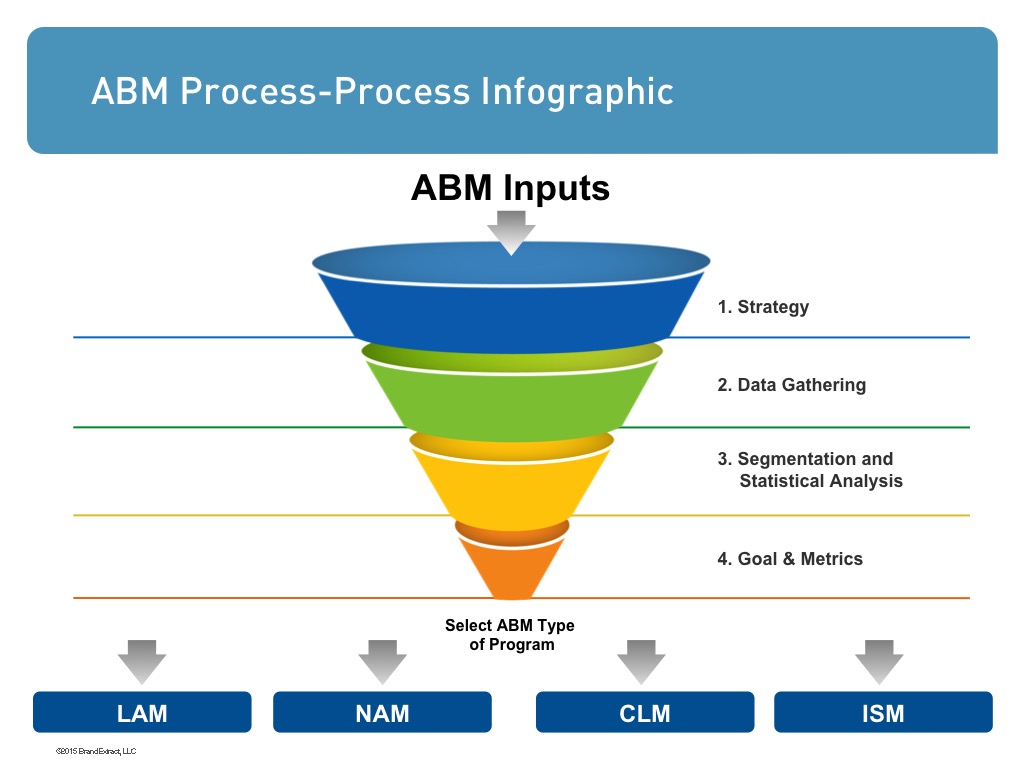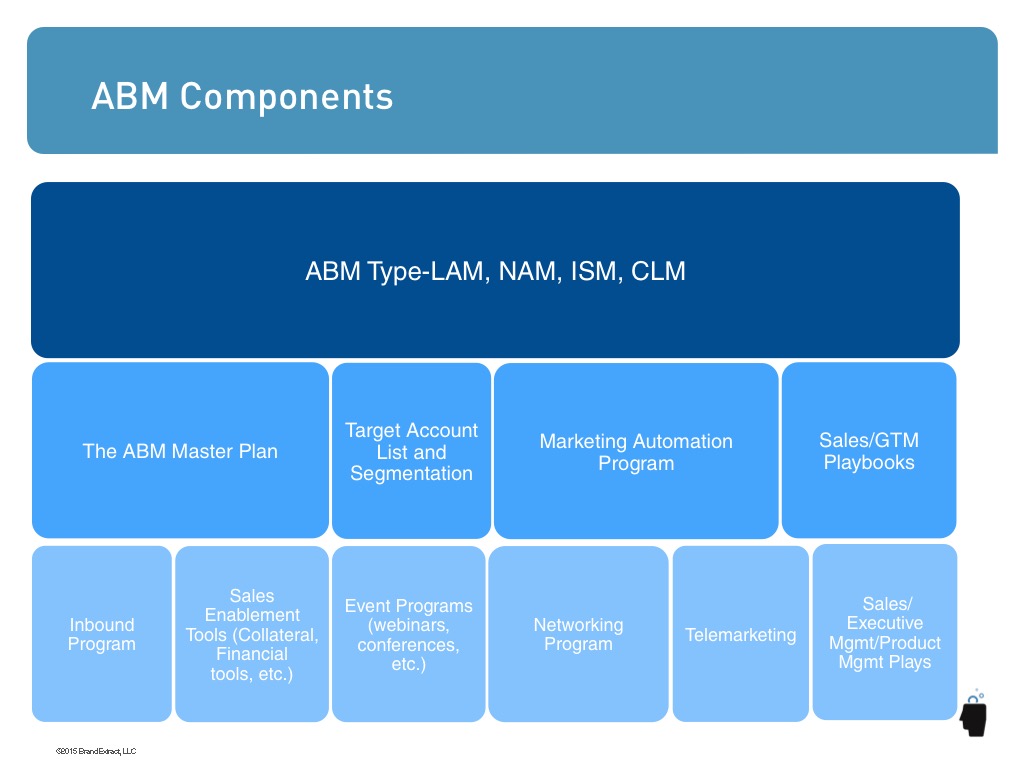Article
How to Build an Effective Account-Based Marketing Program


You’ve launched a new website, implemented a customer relationship management (CRM) strategy and invested in a marketing automation program, but are you still not seeing the results you wanted from your account-based marketing efforts?
Developing a strong account-based marketing (ABM) and a marketing automation program (MAP) is more complex than most people realize. As BrandExtract’s sales leadership team, we regularly coach our clients on how to integrate these programs into their business model. We train them on how to optimize the use of their CRM and MAP systems to yield higher ROI.
In part one of our two-part series, we will discuss the various aspects of ABM and MAP, how these programs work together, and common mistakes we see clients making when trying to implement these programs. Let's take a deeper dive to learn more about how to strategically implement ABM and MAPs into your business model so you can increase your sales leads and ROI.
What Connects Account-Based Marketing and Marketing Automation Programs Together
Several clients come to us asking: how can I get the most out of these programs? In many cases, their issue with ABM and MAP is they aren’t using the programs to their full potential. In order to get the most out of your ABM and MAP, they need to be tied to your overall business strategy. For example, if your strategy is to grow X,
Account-Based Marketing
First things first, let's define what we mean by the term ABM. ABM is a strategic approach that focuses resources on a specific group of qualified target accounts. When ABM is implemented correctly, it’s more effective than broad-based marketing because it targets high potential accounts, is more prescriptive for both marketing and sales, and is goal-oriented which tends to produce the desired results. ABM has been around for several years, and during that time we’ve seen is evolve and improve partly due to technology, but also in how it's applied to firms of all sizes. ABM used to only benefit large corporations with lots of money and resources, but now it’s more accessible to smaller companies. Implementing an ABM approach is beneficial for businesses who are looking for big results that involve major rewards and/or risk. Typically this involves entering a new market, or introducing a new product, or even increasing your retention rate. Even if you have limited resources like a small sales team and a tight budget, you don’t have to rule out ABM as an option. It solves the challenge of finding specific markets or customers to target.
Example: Think of ABM in terms of finding a needle in a haystack. First, we have to find the right haystack (in this case, the market) to target our marketing efforts. Then, we need to find the needles (or customers) we want to reach. In some cases, out of the whole haystack, we only want to target ten needles. Reaching out to this small-niched customer base can benefit you because your money is being used in a much more effective way than mass marketing.
This is the value of ABM. We can put more resources into fewer accounts than traditional marketing programs, which makes sense when you have fewer resources. ABM programs are all data-driven. Utilizing your own historical customer sales data, CRM, marketing data (past campaign results), and augmenting that data with needs segmentation, SIC codes, the number of employees, geography, and company revenues, we can create a profile by which we can then create our ABM target list of accounts. The key here is to identify the key variables that predict which accounts have a higher likelihood to buy by leveraging big data techniques and statistical analysis.The bottom-line: work smarter, not harder.
The infographic below displays how each type of ABM is broken down into specific components and tactics. But first, it's important to understand what the main types of ABM are:
Large-Account Marketing (LAM): Exploits intimate knowledge of a small number of accounts through a customer pitch and unique sales program, based on known variables of the account. This requires a very detailed matrix of account knowledge.
Named-Account Marketing (NAM): Exploits large bases of customers who may be in a similar territory or under a sales rep with a personal offer tailored to a specific call to action and incentive. NAM makes mass marketing feel personal and requires immediate customer actions.
Customer Lifecycle Marketing: Exploits moderate bases of customers who may be in a similar lifecycle of engagement and attempts to up and/or cross-sell broad services overlaid with the current packages. This demonstrates proactive management of success and can stretch you through an organization.
Industry/Segment: Exploits competitor weakness by vertical and/or offering. Industry/Segment uses tailored industry packages, productized for that industry to make the buyer feel special. This is generally designed for large customer segments and mass appeal.
Expert Tip:
ABM can be very complex and overwhelming if you don’t have much experience with the program. In fact, many people give up after their first time trying to run an ABM program. Partnering with an outside expert who understands the resources and knows how to apply the right ABM approach for your situation can save you time, money and most importantly, yield better results. One of the key components to an ABM program is often times the use of a MAP.
Marketing Automation
Marketing automation employs technology from a platform like Pardot, Marketo, Silverpop. Hubspot, etc. These applications allow marketers to deliver content and context-specific messages at the right time, to the right audience. For example, let's say you are a company focused on reaching the healthcare market, but you want to deliver a different message to hospitals than clinics. You could build different email campaigns for each healthcare segment and/or
A MAP campaign is an important component of an ABM campaign. While they can stand individually, they usually go hand-in-hand to support each other. A program we recommend for many clients because of its easy integration with Salesforce.com is Pardot, which is a marketing automation system that helps deliver higher quality leads to the sales team. There are three best practices to a MAP that will support your ABM program:
- Embedding your target account list data in your CRM so that you can easily track customer and sales activity for each of your target accounts.
- Building a lead scoring and segmentation program so you can easily analyze how your MAP is working and further tiering and segmenting each account.
- Building A/B testing into your MAP to make better decisions on which aspects of the program are performing the best, and then leveraging those by using the 10/10/80 process. 10% get option A, 10% get option B, and the remaining 80% get the winning option you are testing.
Common Mistakes in Account-Based Marketing and Marketing Automation
Most mistakes we see from clients using ABM or MAP are going too big or too small. Going too big for an ABM program often leads to failure - especially if the client hasn’t done an ABM before - and can be very overwhelming. If the program gets too big, the client isn’t able to utilize all the data to its full potential. On the other hand, going too small could be considered a smart, well-planned PPC, email marketing, or other specific campaigns with an ABM spirit. We don’t really count those as ABM or MAPs.
 Mark's Advice:
Mark's Advice:
Again, this is why we advise our clients to recruit outside experts to help develop and implement your ABM or MAP. They will understand what resources are needed, what size and type of ABM program to build, and they aren’t too close to the “problem”, so they can be objective. Every successful ABM program should be specific, measurable, achievable, relevant, and have a timeline.
Because this process can be complex and overwhelming, we created this infographic to help show what the ABM process can look like. We show you what different strategies for your ABM program could be, different types of data to measure, and the different kinds of ABM data to measure. The most successful ABM programs are often implemented in phases. Phase one is a discovery process and focuses on two main areas: 1) understanding your target audience by analyzing account data, 2) analyzing the customer journey so we know where to focus our resources. We can then do a gap analysis of customer data (what data are we missing to get a full enough picture to make informed decisions), content (what content do we need to help customers make informed decision), and finally sales enablement tools (what sales tools do we need to develop to help sales as they travel the journey with the customer). Based on the analysis of the target account data along with the customer journey gap analysis, we then decide which type of ABM program (LAM, NAM, CLM, or ISM) will work best to achieve your goals and then work with you to build out that program which we typically do in 90 day increments.
Key Takeaways
ABM and MAP can make a difference in your sales results if they’re properly implemented. In order for ABM or MAP to be successful, they need to tie into your overall business and sales strategy, and you need to have a defined sales approach. Businesses who have big goals associated with entering into new markets, launching a new product, increasing engagement with customers, or furthering strategic relationships with a customer base are a good fit for implementing ABM and MAPs. ABM programs are typically implemented in phases that involve a deep analysis of account data to find those predictive variables, identifying and filling data,
Stay tuned for the second part of our deep dive into sales and marketing programs. We’ll be discussing how the output of ABM ties into your CRM and drives measurable sales team activities. To learn more about how to properly implement ABM or MAP into your sales approach, contact our sales experts today.




